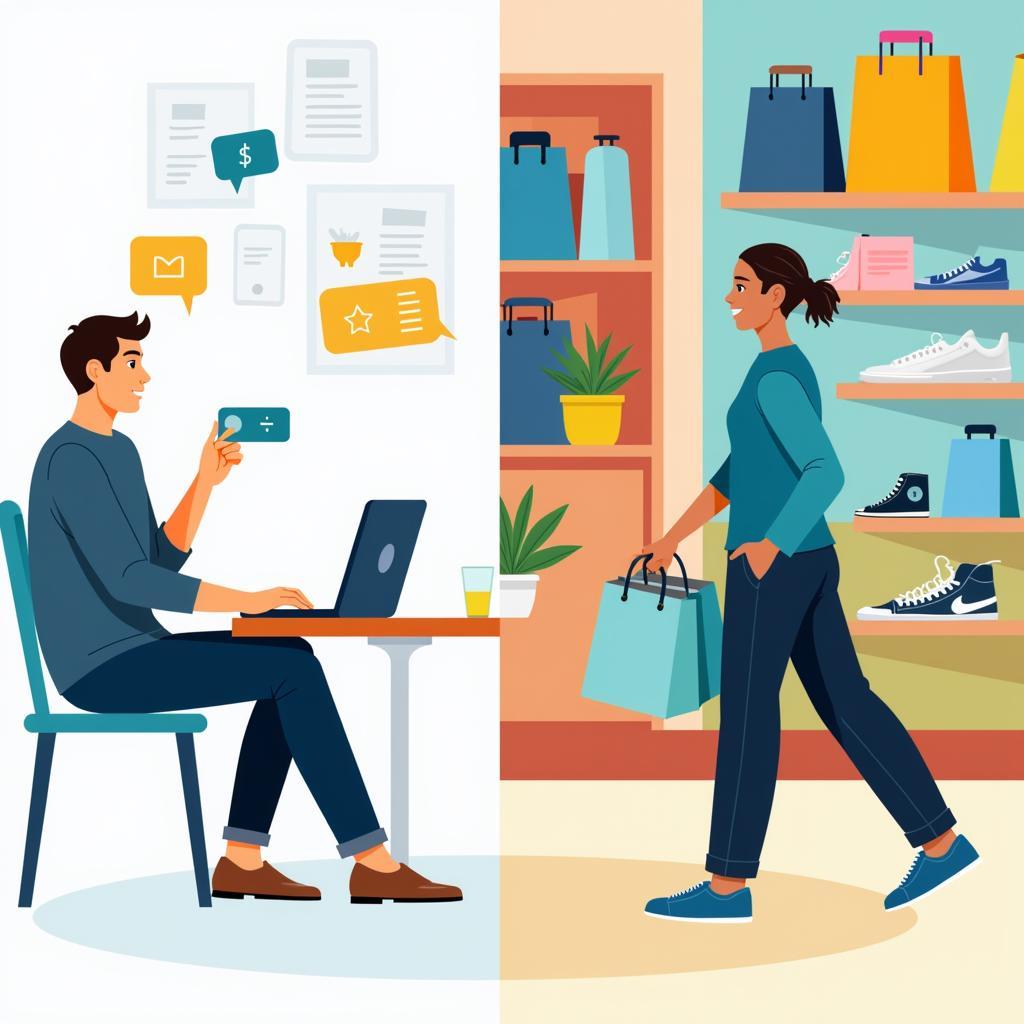The relationship between e-commerce and traditional retail has become an increasingly common topic in IELTS Writing Task 2. Based on the impact of e-commerce on brick-and-mortar stores, this theme has appeared in various forms across recent test papers, particularly in questions about technology, business, and societal change.

Recent IELTS Question Analysis
Some people believe that traditional stores and shops will disappear completely as online shopping becomes more popular. To what extent do you agree or disagree with this opinion?
Question Breakdown
- Topic: Future of retail
- Task: Agree/Disagree
- Focus: Long-term impact of e-commerce on traditional retail
- Key areas: Economic trends, consumer behavior, retail evolution
Sample Essay 1 (Band 8.5)
The rapid growth of e-commerce transforming traditional retail industries has sparked debate about the future of physical stores. While online shopping continues to gain popularity, I strongly disagree with the notion that traditional retail outlets will completely vanish.
Traditional stores offer irreplaceable advantages that online platforms cannot fully replicate. Firstly, they provide immediate tactile experiences, allowing customers to physically examine products before purchase. This is particularly crucial for items like clothing, fresh produce, and furniture where quality assessment through personal inspection is vital. Moreover, brick-and-mortar stores create social interactions and community spaces that fulfill fundamental human needs for personal connection.
Despite the convenience of the effects of e-commerce on traditional retail businesses, many retailers are successfully adopting hybrid models. They integrate digital capabilities with physical presence, offering click-and-collect services and experiential shopping environments. This adaptation demonstrates that traditional retail is evolving rather than disappearing. For instance, major brands like Apple maintain flagship stores that serve as both retail outlets and brand experience centers.
Furthermore, certain business types inherently require physical presence. Service-oriented establishments, specialized craftsmen, and luxury boutiques thrive on personal interaction and expertise that cannot be fully digitized. Additionally, immediate necessity purchases and emergency requirements will always demand local retail availability.
In conclusion, while e-commerce will continue to reshape the retail landscape, traditional stores will adapt and persist by leveraging their unique advantages and embracing technological integration.
Sample Essay 2 (Band 6.5)
These days, many people think traditional shops will disappear because of online shopping. I disagree with this idea because traditional shops are still important.
First, traditional shops have some good points that online shopping doesn’t have. People can touch and try things before buying them. Also, some people like to go shopping with friends and family. It’s a social activity that makes people happy.
Second, some businesses need real shops. For example, restaurants and hair salons cannot work only online. Also, when people need something quickly, they go to real shops instead of waiting for delivery.
However, traditional shops are changing because of e-commerce’s effect on traditional retail. Many shops now have websites and delivery services. They try to give customers both online and offline shopping choices.
In conclusion, I think traditional shops will not disappear completely. They will change and become different, but they will still exist because people need them.
Band Score Analysis
Band 8.5 Essay Analysis
- Sophisticated vocabulary and complex structures
- Clear position with well-developed arguments
- Cohesive paragraphing with smooth transitions
- Relevant examples and specific details
- Academic tone throughout
Band 6.5 Essay Analysis
- Basic but clear vocabulary
- Simple but logical structure
- Limited range of complex sentences
- Some repetition in ideas
- Basic examples without detailed elaboration
Key Vocabulary
- brick-and-mortar (n.) /brɪk.ən.ˈmɔː.tər/ – physical business location
- tactile experience (n.) /ˈtæk.taɪl/ – physical sensation of touch
- hybrid model (n.) /ˈhaɪ.brɪd/ – combining online and offline business
- experiential (adj.) /ɪkˌspɪr.iˈen.ʃəl/ – based on experience
- digitized (v.) /ˈdɪdʒ.ɪ.taɪzd/ – converted to digital format
Remember to practice writing your own essay on this topic and share in the comments for feedback. Future variations might include questions about specific aspects of retail transformation or the social impact of changing shopping habits.